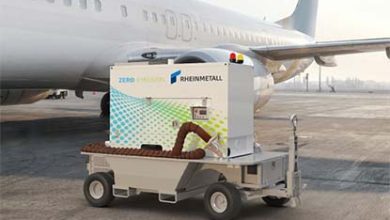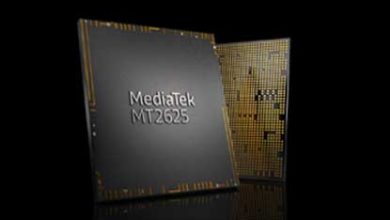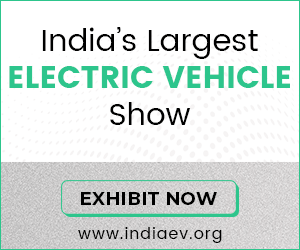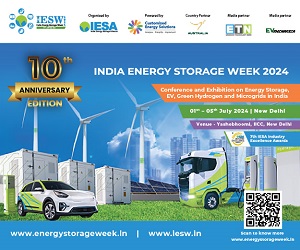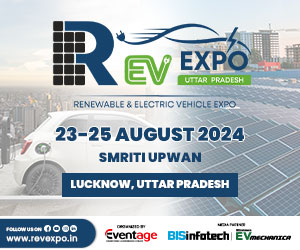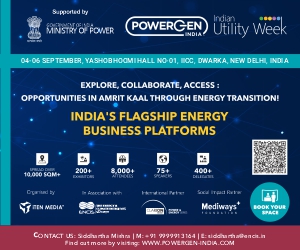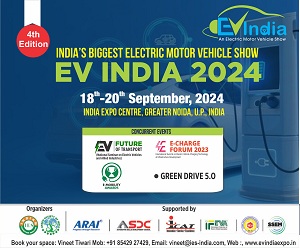Navigating Automotive Electronics Testing with SGS Experts

SGS is the world’s leading testing, inspection and certification company. It is recognized as the global benchmark for sustainability, quality and integrity. During an interaction with Vidushi, Jeevan Hebbalu Head, EMI EMC Connectivity and Products, SGS India discussed the significance of EMC requirements in automotive and consumer electronics, their impact on product development, testing methodologies, and the role of international standards and collaboration with EMC testing service providers like SGS.
1. What are the key differences between EMC requirements for consumer electronics and automotive electronics, and why are these differences significant?
In the parallel world of electronics, where numerous devices on a circuit board communicate, EMI/EMC is vital to prevent gadgets from disrupting each other. It ensures devices adhere to rules, cooperate effectively, and remain safe.
Without EMI/EMC, issues like signal problems, safety risks, and challenges in global markets might arise. Essentially, it ensures that electronic devices coexist harmoniously, minimizing disruptions and ensuring the well-being of both devices and users.
Although the EMC is essential to automotive and consumer electronics, international standards organizations like the IEC have established specific requirements for the sector of consumer electronics, and these standards are periodically revised but at larger intervals.
When it comes to automotive EMC, the lifespan of automotive electronics is typically longer than that of consumer electronics and OEM specifications are stricter than those of national or international standards like ISO. As the effects of an EMC failure in automotive electronics might be fatal, automotive electronics are subject to rigorous safety regulations and standards to ensure the safety of passengers and pedestrians.
2. How do advancements in automotive electronics impact EMC testing requirements and methodologies?
The need for EMC testing is rising as electronic penetration into automobiles continues to increase. EMC testing on automotive electronics requires an in-depth knowledge of the automotive architecture, as well as an awareness of the various OEM requirements and the ability to develop operating modes and determine pass/fail criteria.
The latest advancements, or ‘mega trends,’ we are witnessing in automotive electronics are popularly known as CASE: Connected, Autonomous, Shared, and Electric.
- Connected cars leverage IoT for data exchange, to enhance safety and navigation.
- Autonomous vehicles use AI and sensors for self-driving capabilities.
- Shared mobility integrates ride-sharing platforms.
- Electric cars, powered by batteries, contribute to sustainability.
Predictions suggest that 50% of vehicle costs will be attributed to automotive electronics by 2030, reflecting the growing significance of these innovations in the automotive industry.
As electronics increase, the risk of interference grows. Smartphones, IoT and more cause a surge in electromagnetic interference and there’s increased awareness among customers and designers about EMC compared to a decade ago.
Safety is vital, and interconnected devices must cooperate. Global markets require adherence to standards and EMI/EMC rules are on the rise to ensure our gadgets work together safely. At SGS, professionals with decades of experience in the automotive industry guide customers through the constantly evolving and growing EMC requirements.
3. What role do international standards and OEM specifications play in shaping EMC testing protocols for electronic products, especially in the automotive industry?
The majority of international standards and directives have embraced EV testing methodologies.
For instance, the 2019 version of ISO 11452-2 for Radiated Immunity for Electronic SubAssemblies and the 2020 version of ISO 11452-4 for Bulk Current Injection have incorporated EV testing methodologies.
Similarly, the 2021 version of CISPR 25 for Electromagnetic Emission Limits and Measurement has also adopted EV testing methodologies. Additionally, the new standard ISO 7637-4 is explicitly designed for EV components.
Many global OEMs have integrated EV methodologies into their latest specifications, and UNECE R10 and AIS directives have also incorporated EV testing methodologies in their latest specifications.
EMC labs need to stay updated with these changes and adapt their setups and methodologies to meet the increasing demands.
4. At what stages of the product development lifecycle should EMC considerations be integrated, and what are the potential consequences of neglecting EMC early in the process?
It is important to include EMC considerations at the very beginning of the product design process. This is because early in a project’s lifecycle, adjustments can be made economically and quickly. As the project progresses, EMI issues are often addressed by adding additional components, incurring significant testing fees, and experiencing delays in product launch.
It is advisable to plan multiple iterations of the design and testing phases to avoid surprises at the last minute.
Automotive electronics providers should develop a test plan with specifics such as suitable test conditions, test methodologies, and pass/fail criteria with OEM upfront. Include the lab in the early phases of as a strategy; some OEM requirements require signoff from the supplier and the lab for test feasibility.
5. How can electronic product developers effectively navigate the complexities of EMC compliance, especially when targeting global markets with varying regulations?
Electronics subassembly (ESA) or automotive electronics manufacturers must grasp the various OEM and market requirements. In the case of connected devices, the product developer, along with the OEM, must apply for wireless certifications that vary across different countries. Similarly, for products related to EV and ADAS functionalities, the product developer needs to identify the application and define the product’s operating modes and functional classes to improve safety and mitigate risks associated with EMI/EMC failures.
Adhering to constantly evolving regional and global market regulations can be challenging. It is advisable to seek guidance from technical service providers and strategically plan the project for a successful launch.
6. What specific challenges and considerations arise when conducting EMC testing for EV components, and how do these differ from traditional automotive electronics?
In EVs, small batteries are replaced by large, complex ones. Historically, the voltage supply in vehicles was 12/24 V. However, we are now seeing voltages of 1,000 VDC and higher, and AC-supplies of up to 400 V 3 phases 50/60 Hz, with a charging power of over 100s of kW
The coexistence of lower voltage and high voltage architectures, along with high-speed communication systems within the vehicle, creates a complex electromagnetic environment. Rigorous testing is required, along with the adoption of appropriate measurement techniques, simulation of loads, and establishment of pass/fail criteria tailored to the EV environment.
7. What are the critical infrastructure and equipment requirements for an EMC laboratory to effectively conduct testing on automotive electronics, particularly in regions like Asia-Pacific?
In order to conduct tests on EV components, the EMC laboratory requires specialized power supplies, loads, and coupling networks. For AC-charging tests, access to test systems including Harmonics, Flicker, Burst, and Surge is necessary.
When broadly classifying EV components, they include:
- DC-DC converters: These vary in power ratings to suit vehicles from two-wheelers to large commercial vehicles, necessitating larger power sources and loads.
- DC to AC inverters: These control the e-machine and are bidirectional to simulate motor-generator operation. Their ratings vary based on the vehicle type, requiring AC sources/loads and bidirectional power sources.
- E-Machines: These come in different ratings according to vehicle type, requiring either a movable or fixed EMC-compliant dynos
- On-Board Charger: This component necessitates simulation of a special communication protocol along with AC/DC grid emulators and additional testing from such as EFT, Surge as part of power quality testing.
Depending on the types of system being tested, it may be necessary to have special high voltage filters inside the EMC chamber, including an extended power supply infrastructure. EMC laboratories should also have a coolant unit with filters and fixed/movable dynos to run e-machines or test inverters.
EMC testing for EVs is intricate, spanning from the input power supply to incorporating regenerative power sources for eco-friendly testing. It involves implementing coolant filters and units to maintain optimal temperatures for power electronics. Planning for large worktables and EMC chambers with proper insulation from both low and high voltages is essential for safety. Skilled engineers proficient in HV and EV technology are required, making infrastructure overhaul and meticulous planning imperative for EV EMC testing.
8. How can collaboration with EMC testing service providers like SGS enhance the efficiency and success of electronic product development, especially for companies operating in the automotive sector?
When collaborating with an EMC testing service provider, it is advisable to involve the service provider early in your product development cycle and have a thorough understanding of your target markets. Understand the requirements of the OEM in the event of automotive suppliers and reach an agreement with the OEM regarding the Pass/Fail criteria and test applicability. Consider the time for development in case of failure, and plan your project accordingly.
Across the Asia Pacific region, SGS has an extensive list of EMC labs including those in Korea, Japan, Malaysia, China, India, Germany, and North America. It’s recently opened state-of-the-art testing facility at Pune, India offers a complete range of EMI/EMC tests for automotive sub-assemblies and is equipped with shielded rooms, anechoic chambers, strip line/TEM cells, pulse generators with highly digitized and automated device under test monitoring using various transceivers, cameras and software.
SGS’s entire team has expertise in supporting consumer and automotive electronics to best guide customers through the testing/certification process. Furthermore, SGS can assist certifications like as CE/FCC and E marking/Homologation for automotive products.

